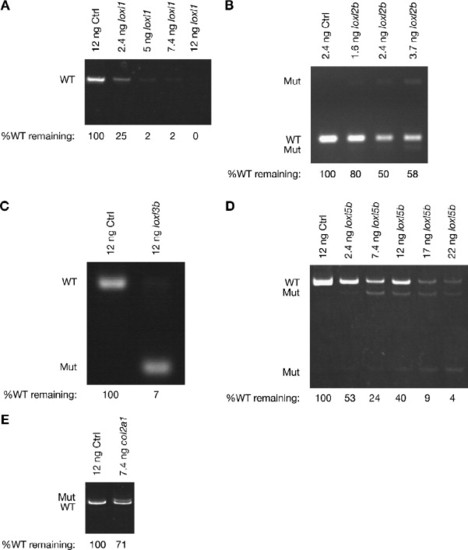Fig. S3
|
Lysyl oxidase and collagen II splice morpholinos decrease the abundance of wild-type splice forms and cause specific changes in splice site usage. (A) loxl1, (B) loxl2b, (C) loxl3b, (D) loxl5b and (E) col2a1. Wild-type embryos injected with the indicated doses of morpholino were harvested at 20 hpf and cDNA prepared from equal amounts of RNA. The intensity of the wild-type (WT) product obtained by PCR was quantified and the percentage of wild-type splice form remaining after morpholino knockdown determined, as noted. This measure is independent of processes that may depress levels of the mutant (Mut) splice products, including degradation through nonsense-mediated decay. The primer set used to amplify loxl1 does not amplify the mutant band. |
| Genes: | |
|---|---|
| Fish: | |
| Knockdown Reagents: | |
| Anatomical Term: | |
| Stage: | 20-25 somites |
Reprinted from Developmental Biology, 307(2), Gansner, J.M., Mendelsohn, B.A., Hultman, K.A., Johnson, S.L., and Gitlin, J.D., Essential role of lysyl oxidases in notochord development, 202-213, Copyright (2007) with permission from Elsevier. Full text @ Dev. Biol.

